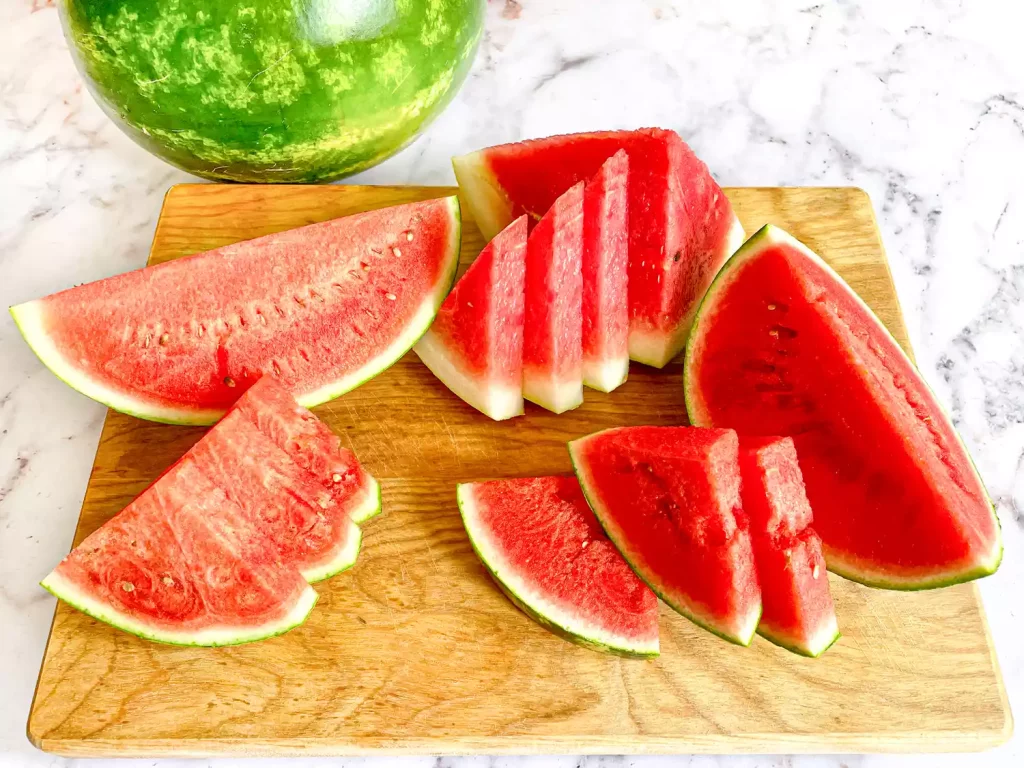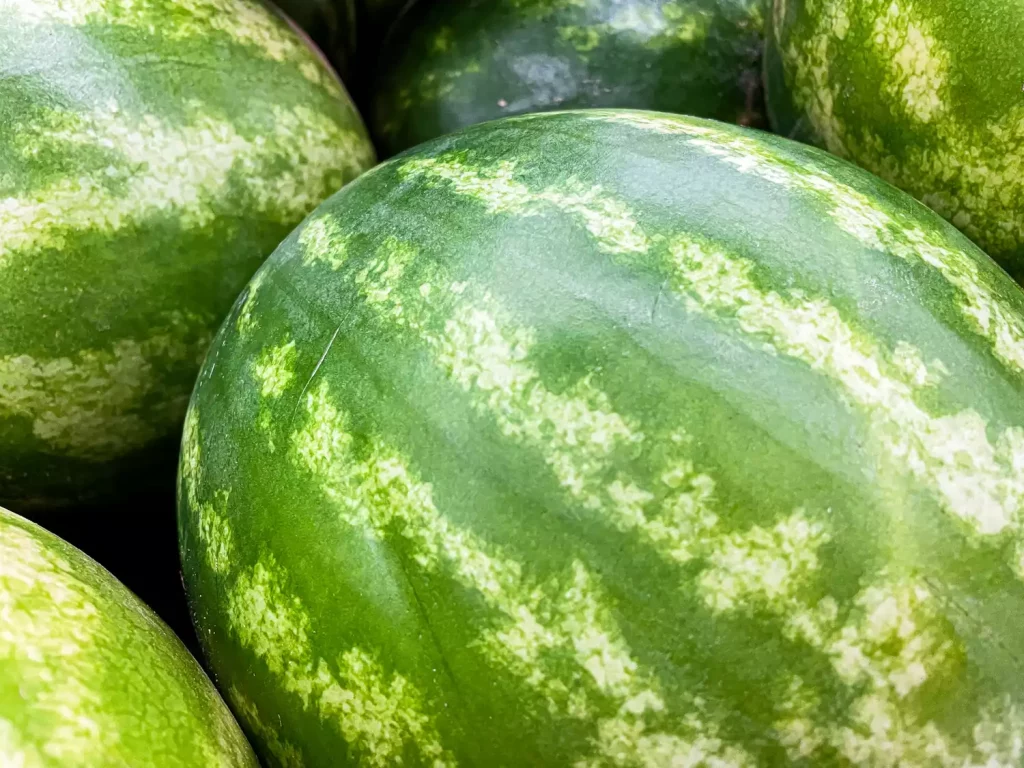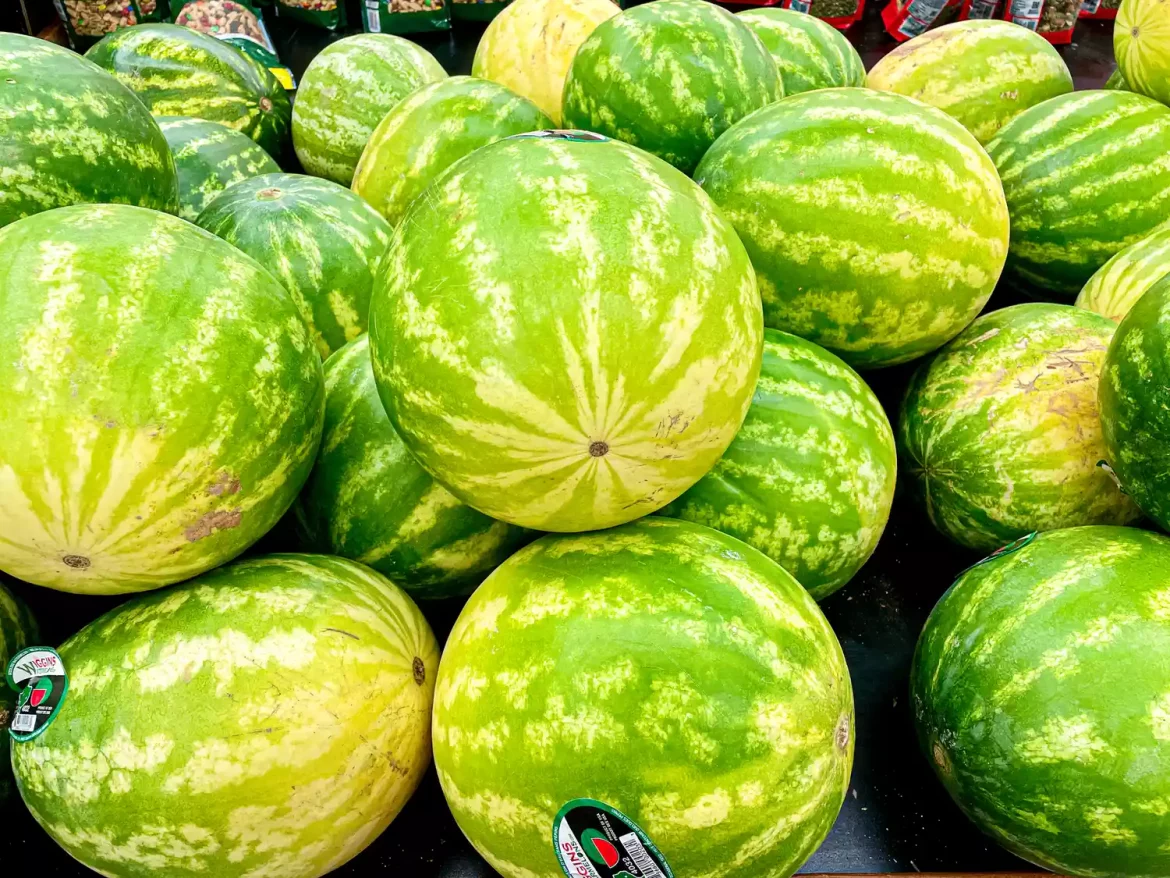Choosing a ripe watermelon can be a delightful yet challenging task. A perfectly ripe watermelon offers the best flavor and texture, making it a refreshing treat during hot weather. This guide delves into the various aspects of selecting a watermelon, from understanding its ripeness to practical tips for handling and storing it.
1. Introduction to Watermelons
The Popularity of Watermelons
Watermelons are a beloved summer fruit known for their sweet, juicy flavor and hydrating properties. Originating from Africa, watermelons are now enjoyed worldwide and come in various varieties, including traditional red-fleshed types and newer hybrids with yellow or orange flesh.
Nutritional Benefits
Watermelons are not only tasty but also nutritious. They are high in water content, providing excellent hydration. They are also rich in vitamins A and C, antioxidants like lycopene, and minerals such as potassium. These nutrients contribute to skin health, support the immune system, and promote heart health.
2. Understanding Watermelon Varieties
Common Types of Watermelons
- Seedless Watermelons: These are popular for their convenience, as they lack the hard seeds found in traditional watermelons.
- Picnic Watermelons: These are typically larger and ideal for family gatherings.
- Icebox Watermelons: Smaller in size, they are perfect for individual use or small households.
- Yellow and Orange Flesh Watermelons: These varieties offer a different flavor profile and color, providing a unique twist on the classic watermelon.
Selecting the Right Variety
When choosing a watermelon, consider the occasion and the number of people you’re serving. Larger watermelons are suitable for gatherings, while smaller ones are better for individual consumption. Additionally, some varieties may have a sweeter taste or different texture, so choose according to your preference.

3. Identifying a Ripe Watermelon
Color and Appearance
- Skin Color: A ripe watermelon should have a deep, rich color. For traditional varieties, look for a dark green hue. Yellow or orange watermelons should have a vibrant color that is consistent throughout.
- Field Spot: The field spot is the area where the watermelon rested on the ground. A creamy yellow spot indicates ripeness. If the spot is green or white, the watermelon may not be fully ripe.
Shape and Symmetry
- Shape: Choose a watermelon that is symmetrical and uniform in shape. Irregularities or lumps may indicate uneven ripening or internal issues.
- Symmetry: A well-shaped watermelon should feel balanced and not have any flat sides or dents.
Weight and Density
- Heft: A ripe watermelon should feel heavy for its size. This is an indication that it is full of juice and has a higher water content.
- Density: Gently tap the watermelon. A ripe one will produce a deep, hollow sound. If the sound is dull, the watermelon may be under-ripe or overripe.
Surface Texture
- Skin Texture: The skin of a ripe watermelon should be firm and not too shiny. A dull, matte finish often signifies ripeness.
- Pressure Test: Press your thumb gently on the watermelon’s surface. It should be firm with slight give. Soft spots may indicate overripeness or internal spoilage.
4. How to Handle and Store Watermelons
Handling Tips
- Avoid Thumping: While tapping can help assess ripeness, excessive thumping or pressing can damage the fruit and affect its freshness.
- Lift Carefully: Handle watermelons gently to avoid bruising. Lift them from the base and avoid dropping them or allowing them to roll.
Storage Methods
- Short-Term Storage: Store whole watermelons in a cool, dry place. They can be kept at room temperature for about a week.
- Refrigeration: For longer storage, refrigerate a whole watermelon. This helps extend its freshness but should be consumed within two weeks for optimal flavor.
- Cut Watermelon Storage: Once cut, store watermelon pieces in an airtight container in the refrigerator. They typically last 3 to 5 days. For longer storage, consider freezing the pieces.

5. Preparing and Serving Watermelon
Cutting Techniques
- Whole Watermelon: Start by cutting off the ends to create a stable base. Then slice the watermelon into manageable wedges or cubes. For a decorative presentation, use cookie cutters to create fun shapes.
- Pre-Cut Watermelon: If you purchased pre-cut watermelon, ensure it is stored properly and check for freshness before serving.
Serving Suggestions
- Chilled: Serve watermelon chilled for a refreshing experience, especially during hot weather.
- In Salads: Incorporate watermelon into salads with ingredients like feta cheese, mint, and cucumber for a unique flavor combination.
- As a Snack: Simply enjoy watermelon slices on their own or with a sprinkle of salt or chili powder for added flavor.
6. Common Myths and Facts About Watermelons
Myth: Watermelon Seeds Are Poisonous
- Fact: Watermelon seeds are not poisonous and are actually edible. They can be roasted and consumed as a nutritious snack.
Myth: Watermelon Should Be Stored on the Counter
- Fact: While whole watermelons can be stored at room temperature for a short period, refrigerating them extends their shelf life and maintains freshness.
Myth: The More Stripes, the Riper the Watermelon
- Fact: The presence of stripes is not a reliable indicator of ripeness. Focus on color, weight, and sound for better ripeness assessment.
7. Health Benefits and Culinary Uses
Health Benefits
- Hydration: Watermelon’s high water content helps keep you hydrated.
- Antioxidants: Rich in antioxidants like lycopene, watermelon may help reduce inflammation and protect against certain diseases.
- Digestive Health: The fiber in watermelon aids in digestion and helps maintain regular bowel movements.
Culinary Uses
- Smoothies: Blend watermelon with other fruits and vegetables for a refreshing smoothie.
- Salsas: Combine watermelon with onions, cilantro, and lime for a unique salsa that pairs well with grilled meats.
- Popsicles: Puree watermelon and freeze it in molds for homemade popsicles.
8. Troubleshooting Common Issues
Overripe Watermelon
- Signs: An overripe watermelon may have a sour smell, mushy texture, or excessive seeds.
- Solution: Cut away the overripe sections and use the remaining fruit in smoothies or as a base for sauces.
Underripe Watermelon
- Signs: An underripe watermelon may be bland, less juicy, and have a green or white field spot.
- Solution: If an underripe watermelon is purchased, allow it to ripen at room temperature for a few days, but note that it may not fully develop flavor.
9. Environmental Impact and Sustainability
Choosing Sustainable Options
- Local Produce: Opt for locally grown watermelons to reduce carbon footprint and support local farmers.
- Organic Choices: Consider organic watermelons to minimize exposure to pesticides and chemicals.
Reducing Waste
- Composting: Use watermelon rinds and scraps in compost to reduce waste and enrich soil.
- Creative Uses: Repurpose watermelon rinds for pickling or use them in creative recipes to minimize food waste.
10. Conclusion
Selecting a ripe watermelon involves understanding various factors like color, texture, weight, and sound. By mastering these techniques, you can enjoy the sweetest, juiciest watermelons available. Whether you’re preparing for a summer picnic or simply enjoying a refreshing snack, knowing how to pick the perfect watermelon enhances your culinary experience and maximizes your enjoyment of this beloved fruit.

